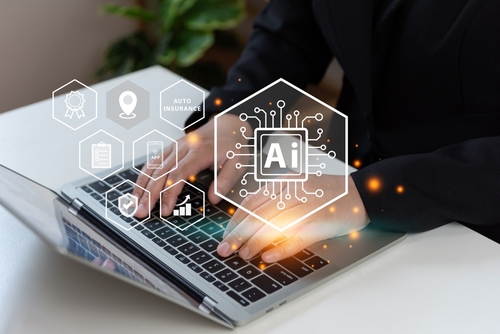In today’s increasingly globalized world, diversity and inclusion (D&I) have emerged as critical components of successful companies. Particularly when enticing Gen Z members of the workforce, it would behoove companies to emphasize these efforts to create a workplace that doesn’t just do good by its customers but also does the right thing for its employees. As businesses strive to foster environments that celebrate and encourage differences, AI can offer incredible tools to enhance these efforts.
What is D&I?
Diversity refers to the variety of backgrounds and lived experiences an individual can bring to an organization. This includes but certainly isn’t limited to race, gender, disability status, and culture of origin. A diverse workplace is made up of many different people with different perspectives.
Inclusion goes a step further to ensure that all employees feel empowered to bring their best selves to their job. An inclusive workplace fosters a sense of belonging and a framework where diverse voices are considered in the decision-making process.
Why Does D&I Matter?
D&I isn’t a workplace “trend” or something you do for good clout. It’s a set of values that people of goodwill should be emphasizing. It’s also good for your business.
D&I efforts will lead to enhanced creativity and innovation—after all, diverse teams bring together individuals with varying perspectives and problem-solving approaches. This can lead to a more creative team that’s able to develop new products and services with ease. D&I also leads to improved employee satisfaction, increasing your retention and allowing you to cut down on employee turnover. Focusing on D&I can also help companies mitigate risks related to discrimination lawsuits and compliance issues. By proactively fostering an inclusive environment and implementing fair hiring practices, companies can avoid legal pitfalls associated with bias or discrimination.
How Can AI Foster These Initiatives?
Many people fear that AI reduces candidates and workers into an algorithm (i.e., turning their thoughts and views into data and nothing more). In fact, some HR professionals believe AI should have no role in their line of work. But if we ignore the gift AI can be to a diverse, inclusive workplace, we’re missing out. AI can bring a lot to the table and has already begun to change the way that companies narrow in on their diversity efforts.
Bias Reduction in Job Descriptions
A Natural Language Processing algorithm is the gold standard for posting job descriptions that avoid biased language. Even using pronouns like “he” or “she” can give off biases that you want to avoid. By recommending gender-neutral terms and inclusive phrases, AI can help broaden the candidate pool to ensure you’re attracting the top talent for the job and not just the person who naturally sees themselves in your job description.
Resume Screening
An average resume screening process can unintentionally perpetuate bias. AI tools can eliminate that bias by screening resumes based on skills and experience instead of simple demographic information. AI can also help standardize the criteria used for evaluating resumes, creating a more consistent approach to candidate selection. This allows your workplace to focus on hard-and-fast qualifications, and not stereotypes or well-meaning assumptions.
Personalized Learning Experiences
AI can support personalized training programs that cater to the diverse learning styles and needs of employees. Of course, you have some information that every single employee needs. But not all employees will learn or take in information the same way. By analyzing individual performance data, AI can recommend tailored resources that promote inclusivity, celebrate diversity, and help all candidates thrive in their new roles.
Objective Performance Metrics
AI can help companies develop objective performance evaluation metrics that focus on actual KPIs rather than subjective opinions, which could include unconscious biases. This reduces bias and stereotyping in promotions, bonuses, and raises, ensuring that all employees are assessed completely fairly.
Remember: Always Approach AI Thoughtfully
Businesses don’t need to fear AI. But AI also shouldn’t be the be-all-end-all of your HR practice. It’s crucial to approach AI integration thoughtfully, especially when it involves D&I. Organizations need to ensure that data is representative, maintains transparency, and welcomes employee input into the process.
One way to ensure a thoughtful AI approach is to remember to continuously assess and refine your AI tools and processes. Regularly reviewing the impact of AI on D&I initiatives can allow organizations to identify areas for improvement and ensure that they’re meeting their goals when it comes to diversity, such as diversity training programs, a retention of diverse talent, or even mentorship programs to help all employees feel valued.
Second, it’s important to remember that systems are only as unbiased as the data they’re trained on. If historical data reflects biases AI algorithms may perpetuate these biases. Companies should ensure that the data used to train AI systems is diverse and representative, not pigeon-holed.
At the end of the day, AI should complement, never replace, human judgment and thoughtfulness. Human oversight will always be essential with AI in terms of interpreting results and making final decisions, especially in sensitive areas like diversity. But with careful implementation, AI has the potential to introduce meaningful change in D&I efforts, ultimately curating a more innovative workplace for all employees.
Claire Swinarski is a Contributing Editor at HR Daily Advisor.

